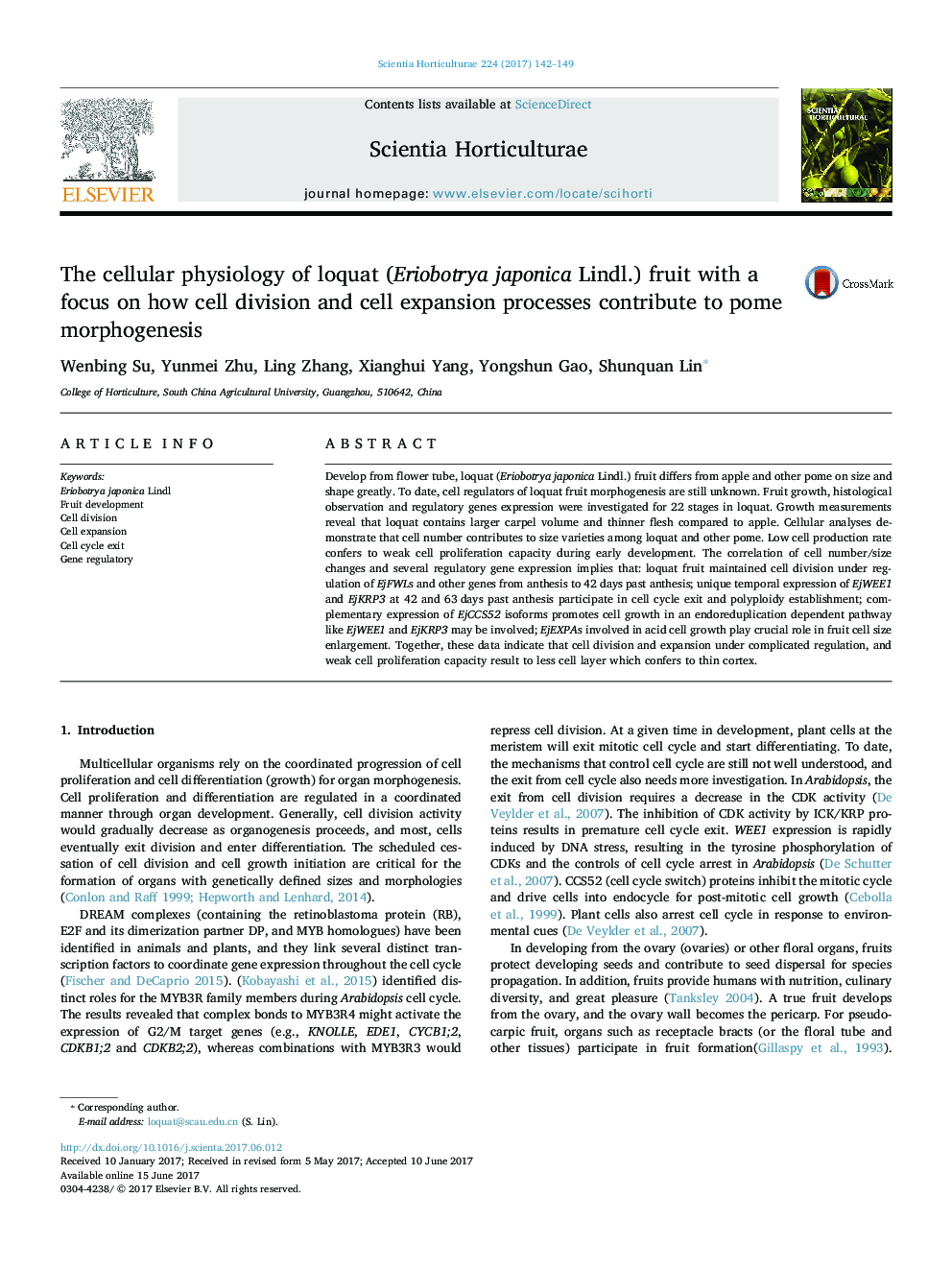| Article ID | Journal | Published Year | Pages | File Type |
|---|---|---|---|---|
| 5769405 | Scientia Horticulturae | 2017 | 8 Pages |
â¢Loquat fruit grows in a single S model.â¢Weak cell division capacity results into small cell layer increase across cortex affects fruit size formation greatly.â¢G2/M-specific genes are markers of fruit cell division, and EjFWLs being negative regulators of cell division.â¢EjWEE1 and EjKRP3 are suggested to participate in both cell cycle exit and polyploidy establishment.â¢EjEXPAs are candidate marker genes which would present fruit cell expansion intensity.
Develop from flower tube, loquat (Eriobotrya japonica Lindl.) fruit differs from apple and other pome on size and shape greatly. To date, cell regulators of loquat fruit morphogenesis are still unknown. Fruit growth, histological observation and regulatory genes expression were investigated for 22 stages in loquat. Growth measurements reveal that loquat contains larger carpel volume and thinner flesh compared to apple. Cellular analyses demonstrate that cell number contributes to size varieties among loquat and other pome. Low cell production rate confers to weak cell proliferation capacity during early development. The correlation of cell number/size changes and several regulatory gene expression implies that: loquat fruit maintained cell division under regulation of EjFWLs and other genes from anthesis to 42Â days past anthesis; unique temporal expression of EjWEE1 and EjKRP3 at 42 and 63Â days past anthesis participate in cell cycle exit and polyploidy establishment; complementary expression of EjCCS52 isoforms promotes cell growth in an endoreduplication dependent pathway like EjWEE1 and EjKRP3 may be involved; EjEXPAs involved in acid cell growth play crucial role in fruit cell size enlargement. Together, these data indicate that cell division and expansion under complicated regulation, and weak cell proliferation capacity result to less cell layer which confers to thin cortex.
